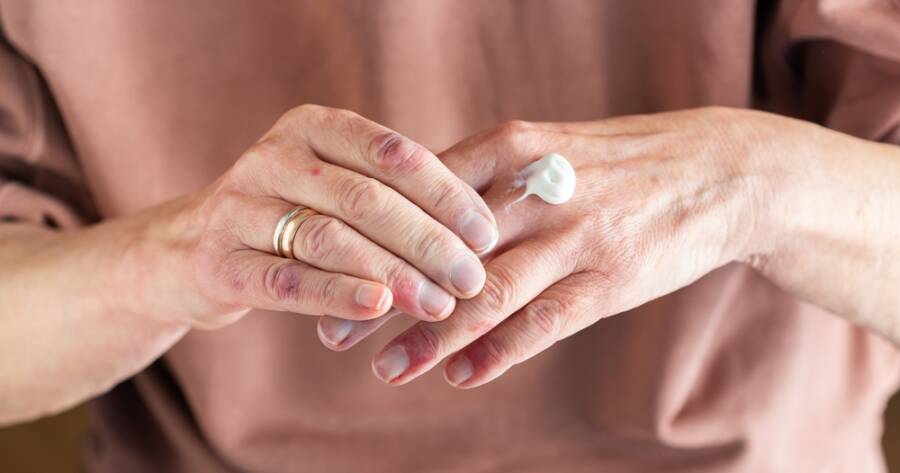Atopic dermatitis is a common skin condition that causes dryness, itching, and inflammation. It affects people of all ages but is most common in children. While the exact cause is not fully understood, genetics and environmental factors play a role. This chronic condition can be frustrating, but the right care can help manage symptoms. Explore its causes, symptoms, and treatment options to help you keep your skin healthy.
What Is Atopic Dermatitis?
Atopic dermatitis, often called eczema, is a long-term skin condition that leads to redness, dryness, and itching. It can appear on different parts of the body, such as the hands, face, neck, and behind the knees.
Some people experience occasional flare-ups, while others deal with ongoing symptoms. Atopic dermatitis is not contagious, but it can significantly affect a person’s comfort and quality of life.
What Causes Atopic Dermatitis?
Doctors are not entirely sure what causes atopic dermatitis, but several factors contribute to its development.
- Genetics: People with a family history of eczema, asthma, or allergies are more likely to develop atopic dermatitis.
- Immune system response: An overactive immune system can trigger inflammation, leading to skin irritation and flare-ups.
- Skin barrier issues: Some people have a weaker skin barrier, which allows moisture to escape and irritants to enter. This leads to dryness and sensitivity.
- Environmental triggers: Common triggers include allergens (pollen, dust mites, pet dander), harsh soaps, stress, cold weather, and certain fabrics like wool.
Symptoms of Atopic Dermatitis
Atopic dermatitis symptoms can range from mild to severe and often change over time. Persistent itching is a key sign, often worsening at night. Red or inflamed patches commonly appear on the face, neck, hands, elbows, and knees. The skin may become dry, rough, flaky, and cracked.
In more severe cases, scratching can lead to swelling, blistering, or infection. Long-term irritation may cause the skin to thicken and develop a leathery texture. Symptoms tend to come and go, often worsening due to triggers like weather changes or stress.
Treatment Options for Atopic Dermatitis
There is no cure for atopic dermatitis, but various treatments can help manage symptoms and prevent flare-ups.
1. Moisturizing regularly: Applying a fragrance-free moisturizer daily helps lock in moisture and strengthen the skin barrier. Ointments and creams work better than lotions for dry skin.
2. Using medications: Doctors may prescribe corticosteroid creams, which reduce inflammation and itching or antihistamines, which help control itching, especially at night. In severe cases, immunosuppressant drugs can regulate the immune system.
3. Avoiding triggers: Identifying and avoiding triggers can prevent flare-ups. This may include using gentle skincare products, avoiding allergens, and managing stress.
4. Taking warm baths: Short, lukewarm baths with mild soap help cleanse the skin without causing dryness. Adding oatmeal or baking soda can soothe irritation.
5. Wearing soft fabrics: Cotton and breathable fabrics are less likely to irritate the skin. Avoiding wool and synthetic materials can help prevent discomfort.
6. Seeking professional help: If symptoms persist or worsen, consulting a dermatologist can help find the best treatment plan.
Biologics Therapies
Biologic therapies are a newer treatment option for moderate to severe atopic dermatitis, targeting the immune system to reduce inflammation. These medications are designed for people who do not respond well to traditional treatments.
CIBINQO (abrocitinib) is an oral Janus kinase (JAK) inhibitor that helps control itching and skin irritation by blocking specific immune signals. ZORYVE (roflumilast) is a topical phosphodiesterase-4 (PDE4) inhibitor that reduces redness and inflammation. Both options can provide relief, but they require a doctor’s prescription and regular monitoring for potential side effects.
Managing Atopic Dermatitis for Long-Term Relief
Atopic dermatitis can be challenging, but proper care can keep symptoms under control. Moisturizing daily, avoiding triggers, and using prescribed treatments can improve skin health. While flare-ups may still happen, a consistent skincare routine makes a big difference.
If symptoms become severe, seeking medical advice is important. With the right approach, people with atopic dermatitis can maintain healthy and comfortable skin.

